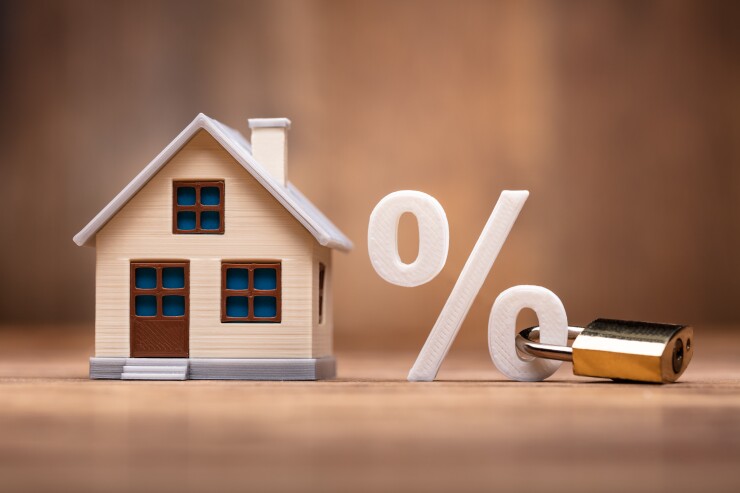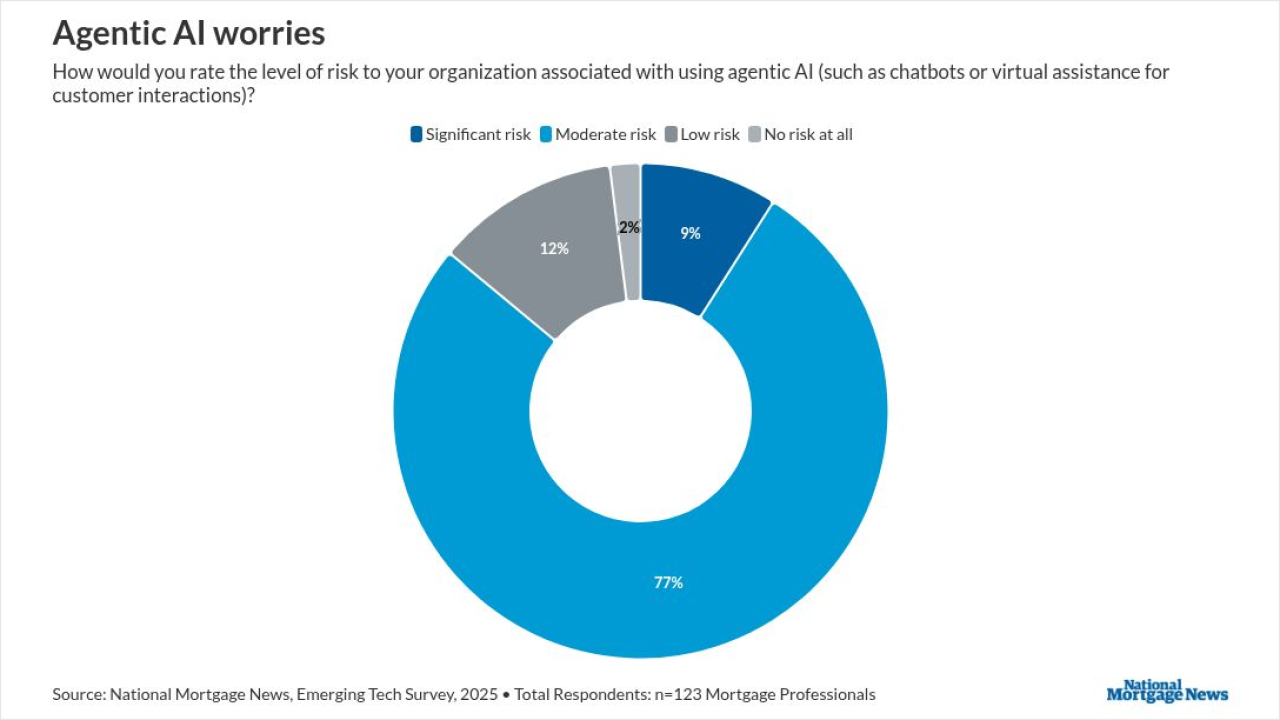The latest refi boomlet sustained its momentum that showed up in late summer, with rate drops driving a noticeable spike in September lock volume, according to Optimal Blue.
Rate locks jumped 28.2% from August to September, the product-pricing engine platform said in its latest market advantage report, and drove its monthly market index to a score of 127.
The cumulative yearly growth represented a
"The rate rally that began in late summer accelerated in September, and borrowers reacted quickly," said Optimal Blue head of corporate strategy Mike Vough in a press release.
Rate-and-term refinance customers, in particular, showed up in droves, with locks accelerating 153.7% from August. Year over year, transaction locks also surged a significant 55.1%.
Meanwhile, cash-out originations increased 13.1% month to month and 27.9% from September 2024.
Combined total volume of both categories led the refinance market to nab a 39% share of volume over the month relative to total activity, the highest in over two years.
"That momentum also spilled into purchase lending as affordability improved, particularly for first-time homebuyers," Vough added. Purchase locks grew 5.9% from the previous month and 8.9% from a year ago, Optimal Blue's report also said.
The mean monthly loan amount continued its summer upswing, coming in at $403,746 in September, up 4.5% from August's $386,387 and 5.6% from $382,476 in July.
Optimal Blue's benchmark interest rates pointed to the influence improved affordability had on September activity. Its 30-year conforming rate ended the month 18 basis points lower at 6.32% compared to August. Rates for government-backed mortgages backed by the Federal Housing Administration and Department of Veterans Affairs, similarly fell by 18 basis points to end September at 6.08% and 5.82%, respectively.
Research published throughout 2025 suggests how improved affordability conditions might
Latest mortgage trends help drive lower DTI ratios, higher credit scores
A sign of improving housing costs appered in lower debt-to-income ratios, Optimal Blue noted. Both conforming activity and FHA production pointed to decreased DTI month over month with VA levels flat.
Ratios fell across all products on a year-over-year basis, though, with DTIs for conforming loans finishing the month at 36.5%. For FHA- and VA-sponsored mortgages, debt to income stood at 44.3% and 44.7%.
Meanwhile, average credit scores also shot up across the board in September's activity, with the mean increasing nine points to 746 for rate-and-term refi transactions from the previous month. For cash-outs, average credit scores rose seven points to 701. Average purchase credit scores grew at a more pace of one point to 738.
At the same time, the
MBS activity sees active lender interest
Secondary market activity trends showed a continuation of securitization trends seen earlier in the summer. Agency mortgage-backed security executions expanded to a 42% share from August's 40%, hinting at stronger interest among large lenders.
Growth in MBS transactions led loan sales to the agency cash window and aggregators to fall by 100 basis points each to 23% and 32% from August.
The share of loans sold at the highest pricing tier surged 300 basis points to a 78%,
"This combination of stronger pricing and greater securitization participation underscores lenders' efforts to optimize execution as volume rebounds while maintaining profitability," Vough said.




